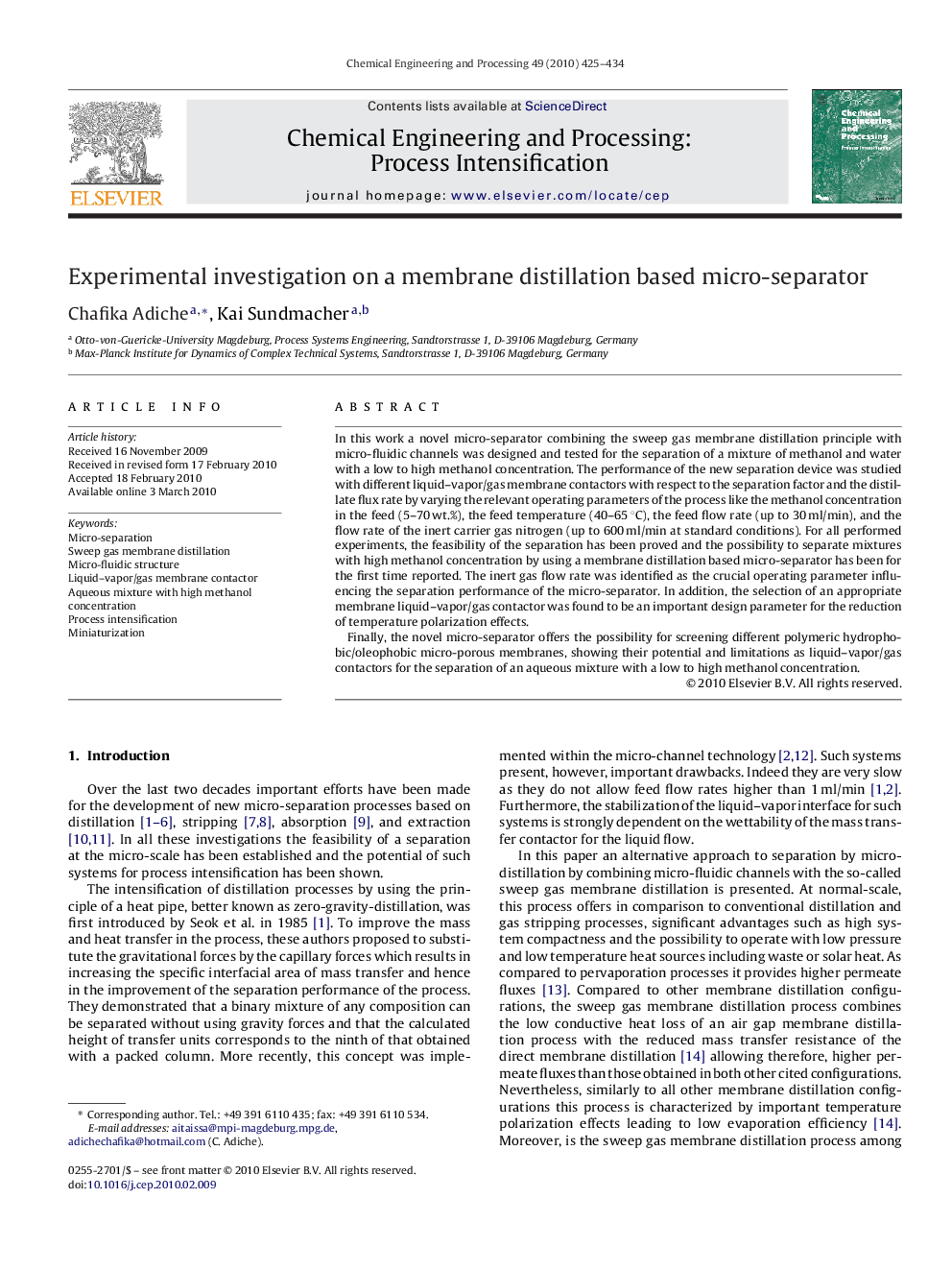| Article ID | Journal | Published Year | Pages | File Type |
|---|---|---|---|---|
| 688438 | Chemical Engineering and Processing: Process Intensification | 2010 | 10 Pages |
In this work a novel micro-separator combining the sweep gas membrane distillation principle with micro-fluidic channels was designed and tested for the separation of a mixture of methanol and water with a low to high methanol concentration. The performance of the new separation device was studied with different liquid–vapor/gas membrane contactors with respect to the separation factor and the distillate flux rate by varying the relevant operating parameters of the process like the methanol concentration in the feed (5–70 wt.%), the feed temperature (40–65 °C), the feed flow rate (up to 30 ml/min), and the flow rate of the inert carrier gas nitrogen (up to 600 ml/min at standard conditions). For all performed experiments, the feasibility of the separation has been proved and the possibility to separate mixtures with high methanol concentration by using a membrane distillation based micro-separator has been for the first time reported. The inert gas flow rate was identified as the crucial operating parameter influencing the separation performance of the micro-separator. In addition, the selection of an appropriate membrane liquid–vapor/gas contactor was found to be an important design parameter for the reduction of temperature polarization effects.Finally, the novel micro-separator offers the possibility for screening different polymeric hydrophobic/oleophobic micro-porous membranes, showing their potential and limitations as liquid–vapor/gas contactors for the separation of an aqueous mixture with a low to high methanol concentration.
